1Assistant Professor Sant Longowal Institute of Engg. & Technology, Longowal – 148106, Punjab, India
2M.R.K. Institute of Engineering and Technology, Rewari -123401
3Assistant Professor Lovely Professional University Phagwara – 144411, Punjab, India
Corresponding author Email: dvijander@gmail.com
Article Publishing History
Received: 10/01/2018
Accepted After Revision: 15/03/2018
Biofuel based energy is likely to be promoted to reduce the dependency on fossil fuels. The most common alternative fuel is FAME biodiesel that is produced by trans esterification. But some disadvantages are also associated with biodiesel; new technologies are under investigation for the production of other biofuels. In the present study green diesel was produced by hydro processing of waste cooking oil. The performance and emission characteristics of green diesel were investigated in single cylinder CI engine. The results were also compared by the corresponding results obtained by conventional diesel fuel. The engine was tested in a series of steady state operating conditions at different load by keeping constant speeds of 1500 rev/min. The performance parameters like brake thermal efficiency (BTE %), specific fuel consumption (SFC in kg/h) and emissions parameters like HC, CO2, CO and NOX emissions were investigated. It was observed that BTHE of green diesel is 23% and 21.76% for petro diesel at 20% load, at 40% load it is 34.24% for green diesel and 25.8% for petrol diesel at 60% load it is 35.93% for green diesel and 31.74 for petro diesel at 80% load it is 38.24 for green diesel and 31.66 % for petro diesel at 100% load it is 31.6% for both green diesel and petro diesel These results show that BTHE increases for green diesel fuels at all load except full load condition. From the results, it was found that for green diesel BSFC(kg/kwh) is1.83 for green diesel and 2.57 for petro diesel at no load condition and at full load it is 0.267for green diesel and 0.270 for petro diesel which is less as compare to petro diesel. It was observed that CO (%VOL) at load (%) 20,40,60,80,100 for green diesel are 0.06, 0.03,0.02,0.02,0.03 and for petro diesel are 0.06,0.04,0.03,0.03 and 0.04 respectively. It is observed that HC (PPM) emission at load (%) 20,40,60,80,100 for green diesel are 14, 21,20,18,25 and for petro diesel are 27, 29.25,24 and 32 respectively. It was observed that NOx (PPM) emission at load (%) 20,40,60,80,100 for green diesel are 217,511,846,1047,978 and for petro diesel are 256,533,994,1129 and 1114 respectively. It was observed that smoke (%VOL) at load (%) 20,40,60,80,100 for green diesel are 7.3,8.7,10.7,20,35 and for petro diesel are 21.2,28.5,42.2, 54.7and 69.1 respectively. From the emission results it is concluded that green diesel (i.e. CO emission hydrocarbon emissions, smoke density and nitrogen oxides emissions) are better than the conventional diesel.
Green Diesel, Hydro Processing, Engine Performance, Emissions
Kumar V, Sindhu R. K, Kumar S. Comparative Analysis of Green Diesel Versus Petro-Diesel in Compression Ignition Engine. Biosc.Biotech.Res.Comm. 2018;11(1).
Kumar V, Sindhu R. K, Kumar S. Comparative Analysis of Green Diesel Versus Petro-Diesel in Compression Ignition Engine. Biosc.Biotech.Res.Comm. 2018;11(1). Available from: https://bit.ly/33teazv
Introduction
Energy plays an important role in the growth of any country. In the transportation, agriculture, industrial sector and to fulfill the basic human needs a huge amount of energy is required. About 81% of total energy demand of the world is fulfilled by non-renewable sources – coal, petroleum-based products, and natural gas, (Prabhahar et al. 2012). But due to the limited availability and harmful effects of fossil fuels on environment, it remains an opinion that alternative fuel could be the indispensable component in the future. A few alternative sources of energy are already exists such as nuclear, wind, solar and geothermal, (Frederica et al. 2016 and Vijander et al. 2018).
But some challenges such as portability, storage, capital, efficiency etc. make them inadequate and sometimes non-viable also. For internal combustion engine, biofuel based energy is likely to be promoted to reduce the dependency on fossil fuels. The world looks towards such a bio-fuel substitute which promises to preserve the environment, and also help in the sustainable and inclusive growth of the country. In last decade biodiesel, ethanol and green diesel were emerging alternative fuels. Biodiesel occupies a prominent position in the field of alternative fuels for CI engine till date, (Prabhahar et al., 2012) invested the performance and emission characteristics of CI engine using Pungamia methyl ester (PME) diesel blend. The experimental results show that BSFC slightly increased and brake thermal efficiency decreased for pungamia methyl ester blends as compared with petroleum diesel fuel. It also found that emission of CO and smoke are decreased about 34% and 25% respectively for B20 at full load, NOx emission increased by 8.5% for B20 blend (Sotelo-Boyás et al. 2010). However, there is an issue of concern about whether is it reliable to use 100% biodiesel without any engine modification. In this regard, some manufacturer is showing caution about honoring warranties on an engine if biodiesel is used (Labecki et al. 2012).
After looking behind these facts, importance of green diesel increases as an alternative biofuel. In this context, Green diesel is emerging as most promising biofuel because it has better fuel properties as compared to conventional diesel, and biodiesel. It was found that cetane number, oxidation stability, cold flow properties and cloud point are better in case of green diesel as compared to petroleum diesel and biodiesel (Kalnes et al. 2008).
In comparison to petroleum diesel and biodiesel, the energy density of green diesel is also greater. The cetane number of green diesel lies between 80 to 99 which is much higher than diesel standard, (Fahmi et al. 2015). The density of green diesel lies in the range of 0.77-0.83 g/ml which also meets the biodiesel and diesel standard. In case of green diesel the net heating value lies between 42 and 44 MJ/kg, which is also almost comparable to the of petroleum diesel, ( Kennedy et al. 2015). In the present study green diesel was produced from waste cooking oil (WCO) by hydro processing method. Hydro processing is mainly comprised of two steps hydrocracking and hydro treating (Eduardo et al. 2017). Hydro processing occurs at high temperature (about at 400°C). Due to this large amount of heat is required to transfer, therefore large amount of energy input is required in this process which significantly increase the cost of green diesel.
Materials and Methods
Hydrocracking
It is a destructive hydrogenation process, in which heavy molecules (having higher molecular weight) broken down to lighter molecules (shown in figure 1), (Ramakanta et al. 2017). The conversion occurs at higher temperature and demands use of hydrogen gas at higher pressure to slow down the condensate chain polymerization reactions. (Toshiyuki et al. 2012). So, that high temperature and high pressure (HTHP) reactor is required for this process. The external features of the reactor are shown in figure 2. In this process sodium carbonate (NaCO3) is used as catalyst to optimize the production. In this experimental investigation H2 was supplied up to 5.5 bar pressure and sample was heated continuously until temperature rise to 400°C. To ensure the proper mixing of H2 and feedstock stirring was also continue during this process. When the temperature rise to 400°C, heating is continued for about one hour so that complete cracking of heavy molecules take place. The maximum pressure in this process rises up to about 150 bar. This process leads to the production of C15-C18 hydrocarbon molecules, i.e. a mixture in the boiling temperature range of diesel, which is generally known as “green diesel” and its chemical nature is similar to conventional diesel (Huber et al. 2010).
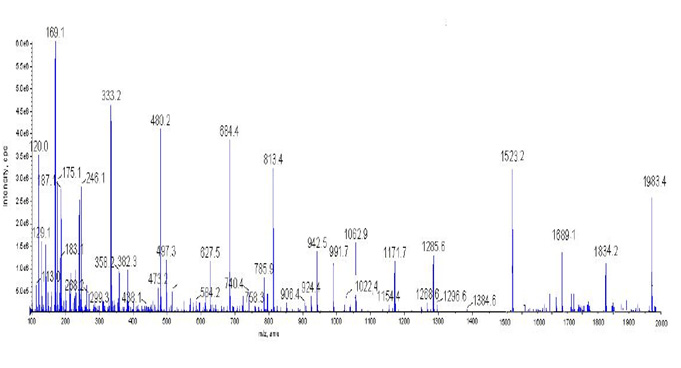 |
Figure 1: Hydrocracking on a bifunctional catalyst |
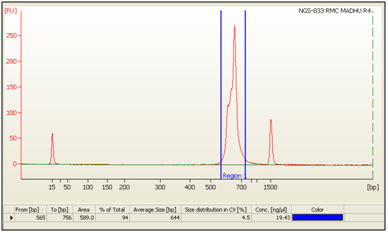 |
Figure 2: True boiling point (TBP) distillation unit |
In hydro processing about 85% (by vol.) bio crude is obtained while the rest 10% escapes in the form of non-condensable gases and 4-5% remains at the bottom of collecting flask in the form of water.
Bio crude distillation
Fractional distillation is a technique by which different components are separated on the basis of difference in their boiling points (www.researchgate.net). Bio crude is a mixture of different liquid hydrocarbon, and these hydrocarbons have different properties, (Linghong et al. 2011). This process enables the separation of different hydrocarbon compounds by evaporation and subsequent condensing of vapours in the collecting tubes of the fractional receiver. The original set-up used in this experiment consist of a 15 theoretical plate column, and having 2 Lt pot flask capacity. In this process a heating mantle is used to heat up the pot flask. The temperature of the pot and column head is measured with the help of thermocouples. The reflux ratio of the condenser was maintained 15:1. The valve fitted at the portion of the TBP column allow the vapours to exit the column, and then they condensed into the condenser. From the condenser liquid proceed to the collecting tubes of the fractional receiver. An automatic turning device makes it possible to collect different fractions in the fractional receiver. The whole arrangement is shown below in figure 2
Fuel properties
The performance and emissions characteristics of fuel depend upon physical and chemical properties of the fuel (Parvaneh et al. 2017). The compatibility of the fuel to the engine also assured by the fuel properties. The fuel properties help us to explain the behavior of fuel. The important fuel properties such as API density, kinematic viscosity, net calorific value and flash point etc. were measured in laboratory. The comparison of some important fuel properties for green diesel and petro-diesel are shown in the table 1.
| Table 1: Comparison of fuel properties | ||
| Fuel property | Green diesel (WCO) | Petro-diesel |
| Density(kg/m3)
Viscosity(centi-stoke) Flash point(°C) Net calorific value KJ/KgK |
857 | 830 |
| 3.0934 | 2.9 | |
| 115 | 70 | |
| 38778 | 42878 | |
Engine Specification
Here, to investigate performance and emissions from green diesel single cylinder CI engine is use the specifications are shown in table 2
| Table 2: Specifications for diesel engine. | |
| Engine Make | Kirloskar |
| Type | 1 cylinder, 4 stroke Diesel |
| Power | 5.2 kW at 1500 RPM |
| Stroke | 110 mm |
| Bore | 87.5 mm. 661 cc |
| Compression ratio | CR 17.5 |
Experimental setup and procedure
The steady state engine test runs were carried out on a single cylinder Kirloskar TV1 CI engine having power 5.2 KW running at 1500 RPM speed. The test engine and dynamometer were controlled by a microprocessor system equipped with data acquisition and logging. Sensors were fitted to the engine and the dynamometer, to measure relevant parameters and send the data to the control system. The sensors measured engine load, engine speed, inlet air temperature, exhaust gas temperature, lubrication oil temperature, fuel consumption and the cooling water temperature. The engine was tested in a series of steady state operating conditions at engine speeds of 1500 rev/min and engine loads of 0%, 20%, 40%, 60%, 80% and 100% load. At each of these conditions the engine was allowed to settle and warm up for about 4-5 minutes.
During the experiments, the cooling water and engine oil temperatures were constant at about 27°C, and the laboratorytemperature was within 25-30°C. The gas analyzers and the measuring equipment were calibrated before each experiment. Experiments were initially carried out on the engine using diesel as fuel in order to provide base line data. The green diesel were prepared and made to run on the engine. The engine was started using neat diesel and allowed to run for at least 10-15 minutes before taking observations. After engine conditions stabilized and reached to steady state, the base line data were taken. Load was varied (Zero load & full load condition) using the alternator load bank and the same was recorded. Gaseous emissions, fuel consumption were also recorded from the respective sensor.
The quantitative analysis of exhaust gas was carried out by using AVL DIGAS ANALYSER and SMOKE METER. In the present study emissions of CO, HC, CO2 and NOX are taken into account for emissions analysis, (Kasiraman et al. 2012).
Results and Discussion
The variation of Break Thermal Efficiency (BTHE) with different loads for both fuels is shown in figure 4. The BTHE of the engine increases with increasing load for diesel and green diesel both. It is observed that BTHE increases due to increase in power developed with increasing the load. It is observed that BTHE of green diesel is 23% and 21.76% for petro diesel at 20% load, at 40% load it is 34.24% for green diesel and 25.8% for petrol diesel at 60% load it is 35.93% for green diesel and 31.74 for petro diesel at 80% load it is 38.24 for green diesel and 31.66 % for petro diesel at 100% load it is 31.6% for both green diesel and petro diesel. The results show that BTHE increases for green diesel fuels at all loads except full load condition at full load remains almost same. The BTHE increases with load because as load is increases, the peak temperature increases which promote the better combustion (Phoona et al. 2017).
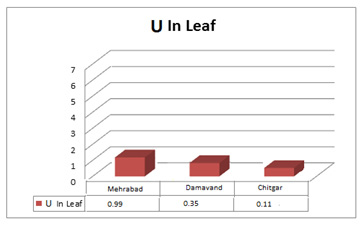 |
Figure 3: External features of the HPHT reactor |
 |
Figure 4: Variation of BTHE at different load |
The higher BTHE of green diesel may be attributed to its high density and combustion phasing relative to TDC (Muralidharn et al. 2011). From figure it is found that a large part of fuel burns just after the TDC. It is favorable with concerned to better performance that large fraction of fuel burns in the proximity of TDC. These two factors believed to supersede the effect of its lower heating value.
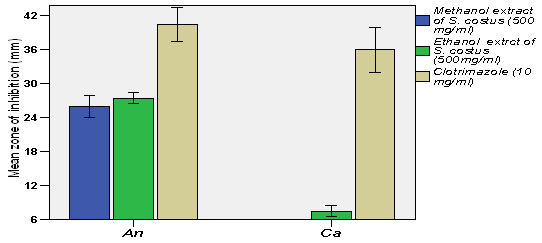 |
Figure 5: Net heat release rate with crank angle near the TDC |
From the results, it was found that for green diesel BSFC (kg/kwh) is 1.83 for green diesel and 2.57 for petro diesel at no load condition and at full load it is 0.267 for green diesel and 0.270 for petro diesel which is less as compare to petro diesel. Figure 6 illustrates the brake specific fuel consumption (BSFC) of the fuel samples tested with respect to different loads. BSFC is defined as the fuel consumption rate divided by its corresponding engine power output, (Prabhahar et al. 2012) The low BSFC of green diesel is due to it is high calorific value (John et al. 2015)
 |
Figure 6: Variation of BSFC at different load |
Figure 7 illustrate that mechanical efficiency slightly increases when engine was run on green diesel as compare to petro-diesel. The reason behind this may be a little higher viscosity of green diesel as compare to petro-diesel. As viscosity increases, the lubricating capacity also increases which results in the less frictional losses, (Saravanan et al. 2010). This behavior of green diesel was shown at all load conditions.
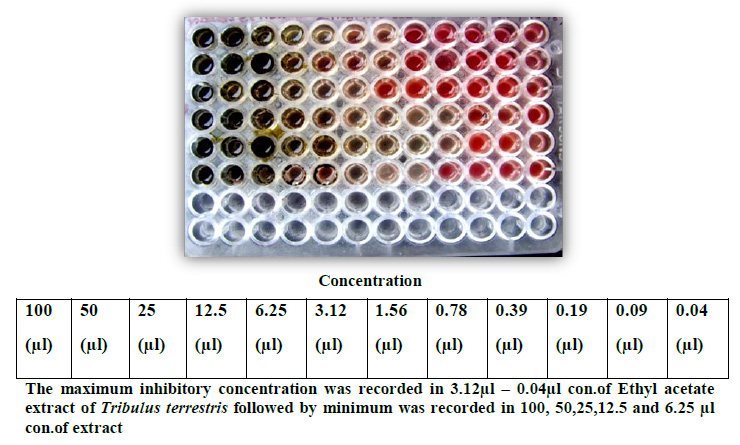 |
Figure 7: Variation of MECH at different load |
From the result it was observed that CO (%VOL) at load (%) 20,40,60,80,100 for green diesel are 0.06, 0.03,0.02,0.02,0.03 and for petro diesel are 0.06,0.04,0.03,0.03 and 0.04 respectively. The variation of CO emissions with loads is shown in figure 8. The figure shows that CO emission decrease with engine load. CO is a product of incomplete combustion, thus at higher engine loads, higher combustion temperature promotes more complete combustion and hence less CO emission. High CO emissions were observed at lower loads. In addition, at lower loads CO emissions are increased due to incomplete combustion (Mathur 2014).
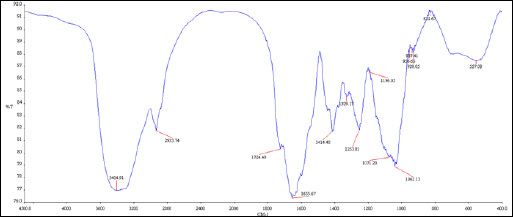 |
Figure 8: Variation of CO at different load |
It can be seen that CO emissions for green diesel were lower as compared to petroleum diesel which might be due to its short combustion tail during the late stage as shown in pressure vs. crank angle curves in figure 9. The lower CO emissions for green diesel indicate the better combustion than petroleum diesel at all load stage. This shows that there is better utilizations fuel energy in case of green diesel.
 |
Figure 9: In cylinder pressure variation with crank angle in large view (last stage of combustion) |
From the experiments it was observed that HC (PPM) emission at load (%) are 20,40,60,80,100 for green diesel are 14, 21,20,18,25 and for petro diesel are 27, 29.25,24 and 32 respectively The variation of HC emissions with loads is shown in Figure 10. The figure shows that HC emission decrease with engine load but slightly increases at full load. HC is a product of incomplete combustion, thus at higher engine loads, the higher combustion temperature promotes more complete combustion and hence less HC emission (Ganeshan 2006). It can be seen that there was decrease in ppm of HC when the diesel engine fuelled with green diesel at all loads stage. The results show that HC emissions decreases by 25-30% in case of green diesel at all load stages except idle stage. That is due to the better air-fuel mixing in case of green diesel. The high peak of net heat release rate is an indication of better combustion. From above observations we can says that there is less HC emissions problem with green diesel. These results also show the better combustion quality of green diesel.
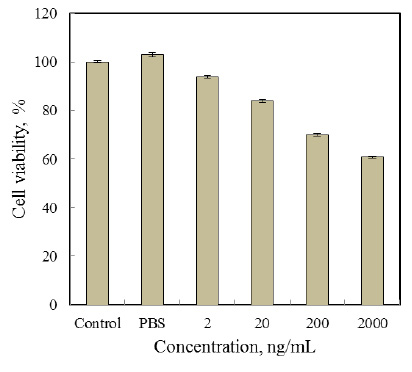 |
Figure 10: Variation of HC at different load |
From the experiment it was observed that NOx (PPM) emission at load (%) 20,40,60,80,100 for green diesel are 217,511,846,1047,978 and for petro diesel are 256,533,994,1129 and 1114 respectively. Figure 11 shows the oxides of nitrogen (NOx) emission of different fuel samples tested at different load conditions. In general, the formation of NOx is affected by the peak flame temperature, the high burning gas temperature, the ignition delay and the content of nitrogen and oxygen available in the reaction mixture (Imdadul et al. 2017).
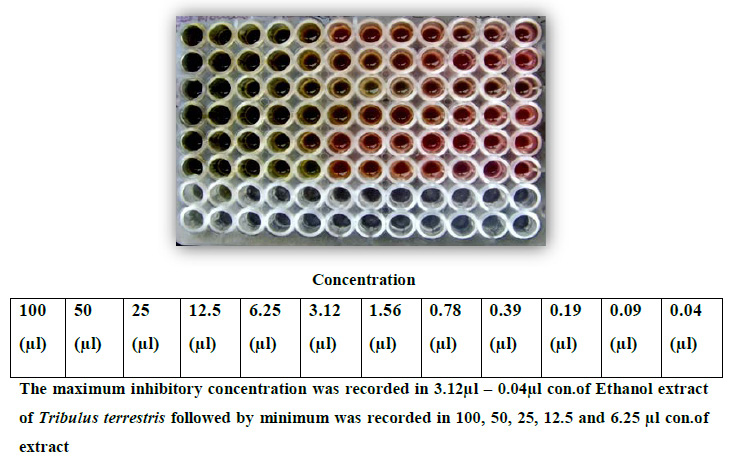 |
Figure 11: Variation of NOX at different load |
It was observed that as the load increased, the temperature in the cylinder also increased and thus higher absolute NOx (ppm) formation. The results obtained from experiment also shows same trend for both fuels. The emissions of NOX from green diesel is very less as compare to conventional diesel. The emissions of NOX in ppm at idle stage are almost same for green diesel and conventional diesel. The results shows that NOX emissions decreases about 10% in case of green diesel as compare to petro-diesel. This may be due to the less availability of nitrogen and oxygen mixture content, (Aatola et al. 2008).
From the results it was also observed that CO2 (%VOL) at loads (%) 20,40,60,80,100 for green diesel are, 2.7, 3.5, 5.1, 5.9, 6.3 and for petro diesel are 2.7, 3.4, 4.8, 5.7 and 6.3 respectively The experimental results of CO2 emissions are illustrated in figure 12. There is a general trend that as emissions of CO decreases then CO2 emissions increases, (Ganeshan 2006). Because decrease in CO emissions indicates that combustion quality is improved, that results increase in the CO2 emissions. The results show that emissions of CO2 increases slightly for green diesel as compare to petroleum diesel.
From the present data it is apparent that that smoke (%VOL) at load (%) 20,40,60,80,100 for green diesel are 7.3,8.7,10.7,20,35 and for petro diesel are 21.2,28.5,42.2, 54.7and 69.1 respectively. Smoke formation occurs primarily in the fuel rich zone of the cylinder, at high temperature and pressure. Smoke formation can be controlled by applying partially oxygenated fuel, which reduces locally over-rich regions (it is the region where the fuel is more than required). When the engine runs under-load at WOT (Wide open throttle), maximum fuel is injected to supply maximum power, which is a rich mixture. Thus at higher load, an increased fuel-air ratio fuel is injected in large quantities and much of the unburnt fuel escape with the exhaust resulting in maximum smoke emission, (Rajput 2012).
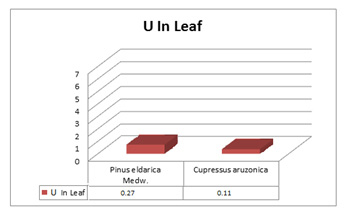 |
Figure 12: Variation of CO2 at different load |
Other reason may be the difference in chemical structure of the green diesel. Under less than 75% load condition, smoke formation was less and it increases with the increase in load. Also, the difference in smoke level of the green diesel and diesel is more significant at all load. The smoke reduction with pure green diesel was around 70-80% as compared diesel. Also, The average smoke density in percentage were 17.2, 21.2, 28.5, 42.2, 54.7 and 69.1 for the diesel while for green diesel the smoke densities were 3.5, 7.3, 8.7, 10.7, 20 and 35 at no load, 20, 40, 60, 80 and 100% load condition. The green diesel have a narrow range in regards to length of hydrocarbons which promote the air – fuel mixing (Kalens et al. 2008). The better air – fuel mixing improved the combustion quality which causes low smoke emissions.
From the results it is observed that O2 (%VOL) at load (%) 20,40,60,80,100 for green diesel are 15.8, 15.1, 12.9, 11.7, 11.1 and for petro diesel are 16.7, 15.6, 13.2, 12and 11.2 respectively. Figure 14 shows that emissions of oxygen slightly decreases for green diesel as compared to petro-diesel. That might be due better combustion of green diesel. That results shows the better performance and emissions characteristics of green diesel. The results are as per expected because carbon dioxide emissions are high for green diesel fuel and follows general trend, (Saravanan et al. 2010). The variation of oxygen emissions with load for green diesel and petro-diesel are shown in figure below.
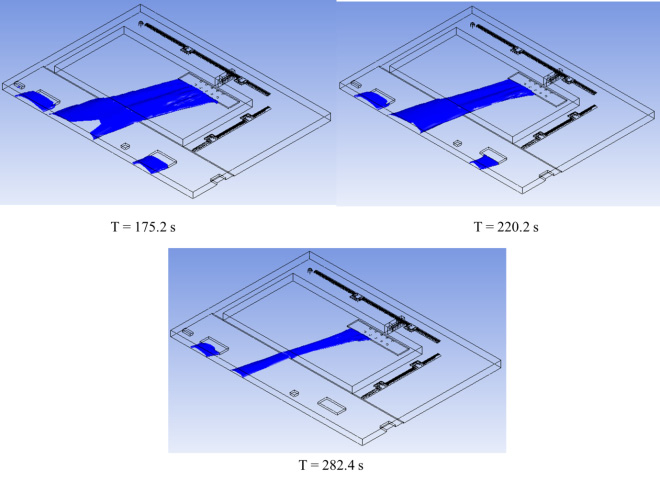 |
Figure 13: Variation of smoke at different load |
 |
Figure 14: Variation of oxygen emissions with load |
Conclusion
The performance and emission characteristics of green diesel were investigated by varying load and keeping compression ratio fixed in CI engine. The results are also compared by the corresponding results obtained by conventional diesel fuel. The following results are concluded from experimental work and analysis: The performance results shows that brake thermal efficiency and brake specific fuel consumption both are better in case of green diesel fuel. The emissions results of green diesel (i.e. hydrocarbon emissions, smoke density and nitrogen oxides emissions) are too much better than the emissions results of conventional diesel. So, green diesel is better than conventional diesel as per pollution concern. The fuel properties like density and kinematic viscosity of both fuels are almost comparable so, there may not be cold starting and fuel injection problem.
Acknowledgements
While bringing out this research paper to its final form, a number of people helped, special thanks are to Prof. Rakesh Kumar and Prof. Sandeep Kumar.
References
- Aatola H, Larmi M, Sarjovaara T, Mikkonen S. (2008) Hydrotreated vegetable oil (HVO) as a renewable diesel fuel:Trade-off between NOx, particulate emission, and fuel consumption of a heavy duty engine. SAE International copyright
- Eduardo S. Perez-Cisneros, Mauricio Sales-Cruz, Ricardo Lobo-Oehmichen, Tomás Viveros-García (2017) A reactive distillation process for co-hydrotreating of non-edible vegetable oils and petro-diesel blends to produce green diesel fuel Computers & Chemical Engineering, Volume 105, Pages 105-12
- Fahmi Othman Mohd, Abdullah Adam, Najafi G, Rizalman Mamat (2017) Green fuel as alternative fuel for diesel engine: A review Renewable and Sustainable Energy Reviews, Volume 80, pp. 694-709
- Frederica P. Perera (2016). Multiple Threats to Child Health from Fossil Fuel Combustion: Impacts of Air Pollution and Climate Change Environ Health Perspect. 125(2): 141–148
- Ganeshan (2006) V. A text on IC engine Tata McGraw Hill Publications Company (P) LTD. Page 495-507
- Guzman A, Torres JE, Prada LP, Nunez L.(2010) Hydroprocessing of crude palm oil at pilot plant scale. Catalysis Today;156:38–43 https://www.researchgate.net/topic/Fractional-Distillation [Access on 8 February 2018]
- Huber GW, O’Connor P, Corma A. (2007) Processing biomass in conventional oil refineries: production of high quality diesel by hydrotreating vegetable oils in heavy vacuum oil mixtures. Applied Catalysis A: General; 329:120 – 9.
- Imdadul H.K., Rashed M.M.,Shahin M.M., Masjuki H.H., Kalam M.A., Kamruzzaman M., Rashedul H.K. (2017)Quality improvement of biodiesel blends using different promising fuel additives to reduce fuel consumption and NO emission from CI engine Energy Conversion and Management, Volume 138, Pages 327-337
- Kennedy J Mwangi, Wen-Jhy Lee, Yu-ChengChang, Chia-Yang Chen, Lin-Chi Wang (2015) An overview: Energy saving and pollution reduction by using green fuel blends in diesel engines Applied Energy, Volume 159 pp. 214-236
- Kalnes T, Marker T Shonnard D, Koers K. (2008) Green diesel and biodiesel a technoeconomic and life cycle comparison. In: Proceedings of the 1st alternative fuels technology conference Prague, Czechoslovakia.
- Kasiraman G., Nagalingam B., Balakrishnan M.,( (2012) ) Performance, emission and combustion improvements in a direct injection diesel engine using cashew nut shell oil as fuel camphor oil blending, Energy 47 116–124
- Labecki L, Cairns A., Xia J, Megaritis A, Zhao H.L, Ganippa L.C. (2012) Combustion and emission of rapeseed oil blends in diesel engine, Appl. Energy 3 ; 139–146
- Linghong Zhanga Pascale Champagneab Chunbao (Charles) Xu (2011) Bio-crude production from secondary pulp/paper-mill sludge and waste newspaper via co-liquefaction in hot-compressed water Energy Volume 36, Issue 4, Pages 2142-2150
- Mathur M.L, Sharma R.P, ( 2014) A text on IC engine Dhanpat Rai Publications (P) LTD. page 20.4-20.9
- Muralidharn K., Vasudevan D., (2011) Performance, emission and combustion characteristics of a variable compression ratio engine using esters of waste cooking oil and diesel blends, Appl. Energy 88 ;3959–3968
- Parvaneh Zareh, Ali Asghar Zare, Barat Ghobadian (2017) Comparative assessment of performance and emission characteristics of castor, coconut and waste cooking based biodiesel as fuel in a diesel engine Energy, Volume 139, Pages 883-894
- Prabhahar M, Murali Manohar R, Sendilvelan S, (2012) performance and emission studies of a diesel engine with pongamia methyl ester at different load conditions, international journal of engineering research and applications (ijera), vol. 2, issue 3, pp.2707-2713
- Rajput R.K. (2012) A text on Power Plant Engineering Laxmi Publications (P) LTD. Page No. 1004
- Ramakanta Sahuab Byung Jin SongacJi SunImad Young-PyoJeonad Chul WeeLeead (2015) A review of recent advances in catalytic hydrocracking of heavy residues Journal of Industrial and Engineering Chemistry Volume 27, Pages 12-24
- Saravanan S, Nagarajan G, Lakshmi Narayana Rao, Sampath S (2010) Combustion characteristics of a stationary diesel engine fuelled with a blend of crude rice bran oil methyl ester and diesel, Energy 35 ;94–100
- Sivaramakrishnan K. (2017) Investigation on performance and emission characteristics of a variable compression multi fuel engine fueled with Karanja biodiesel–diesel blend Egyptian Journal of Petroleum xxx (2017) xxx–xxx
- Sotelo-Boyás R, Liu Y, Minowa T.(2010) Renewable Diesel Production from the Hydrotreating of Rapeseed Oil with Pt/Zeolite and NiMo/Al2O3 Catalysts. Ind. Eng. Chem. Res
- Toshiyuki Kimura, Chen Liu, Xiaohong Li, Takaaki Maekawa, and Sachio Asaoka (2012) Conversion of Isoprenoid Oil by Catalytic Cracking and Hydrocracking over Nanoporous Hybrid Catalysts Hindawi Publishing Corporation Journal of Biomedicine and Biotechnology Volume 2012, Article ID 637125, 9 pages
- Vijander Kumar, Navneet Goyal (2018) Comprehensive Study of Different Renewable Energy Resources such as Hydro Energy, Solar Energy and Wind Energy International Journal of Advances in Agricultural Science and Technology, Vol.5 Issue.2, pg. 95-106


